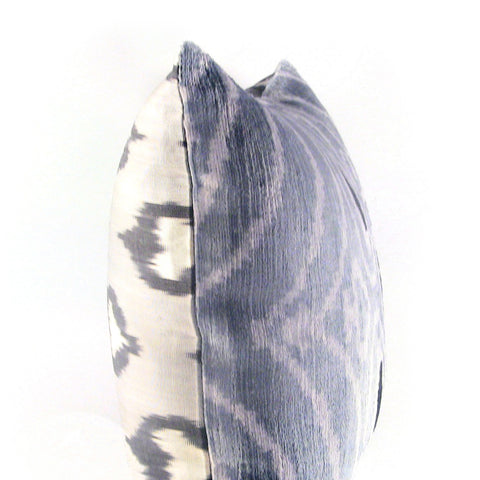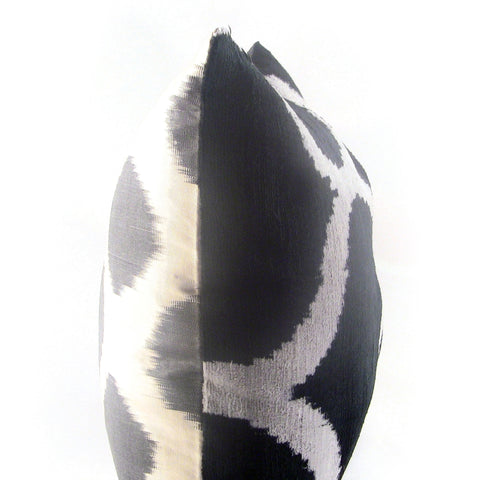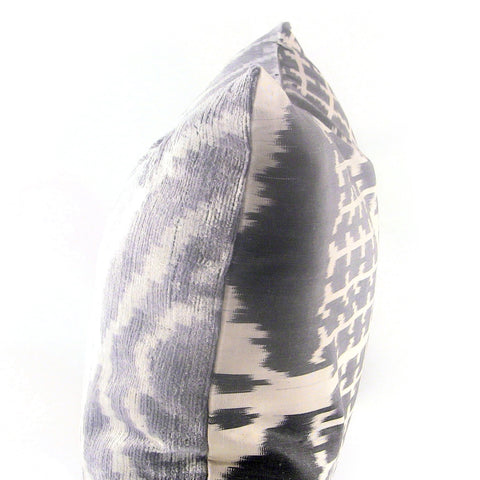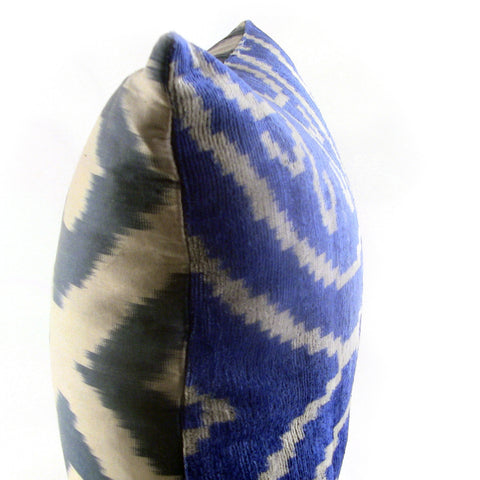Ikat Pillows
80% pure silk, 20% cotton. Handwoven in Turkey. Velvet and Double-sided options available. The bold colors and striking patterns of ikat fabric are contemporary and fashionable; however, they represent a centuries-old technique of dyeing and weaving cloth.
The word “ikat” -- pronounced “ee-KAHT” -- is derived from “mengikat,” the Malaysian term meaning “to bind” or “to tie.” Traditional ikat is a complicated sort of tie-dying process in which loose threads or yarns are gathered into bundles and tied with blades of grass or with wax-treated cotton. These bindings indicate where the dye is able to penetrate and color the thread.
Ikat fabric techniques have been practiced in Southeast Asian countries, including India, Indonesia and Japan, for thousands of years. For instance, ikat patterns are noticeable in the Ajanta cave paintings of India that date to the fifth century. A fragment of ikat fabric that is on display in the Tokyo National Museum dates to the seventh century. Cotton textiles with distinctive ikat stripes, which appear to have been made in Yemen in the eighth or ninth century, have been discovered in Egypt.
Although ikat may have originated in Asia, many textile historians believe the technique developed independently in widely disparate and distinct cultures throughout the world through the ages. For instance, ikat is a long-standing tradition in the Central and South American countries of Mexico, Argentina and Bolivia.
Early West African weavers, especially those in what are now Ghana, the Ivory Coast and Nigeria, also used the weaving technique. Ikat came to Europe by way of travelers along the Silk Road, Dutch traders in Southeast Asia and Spanish explorers in South America.
As you might expect, each geographic area and/or tribe tends to have its own distinct ikat styles, patterns and colors. In the English language today, “ikat” is a general term used to describe both the fabric-making process and the cloth itself, no matter where it is created.






























